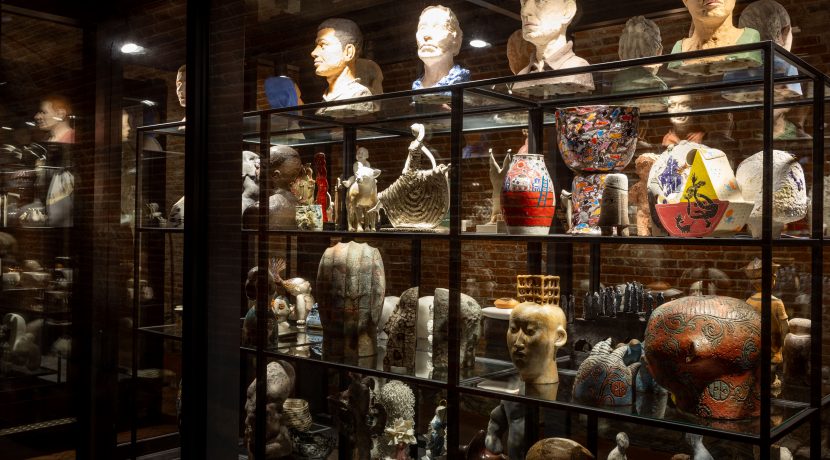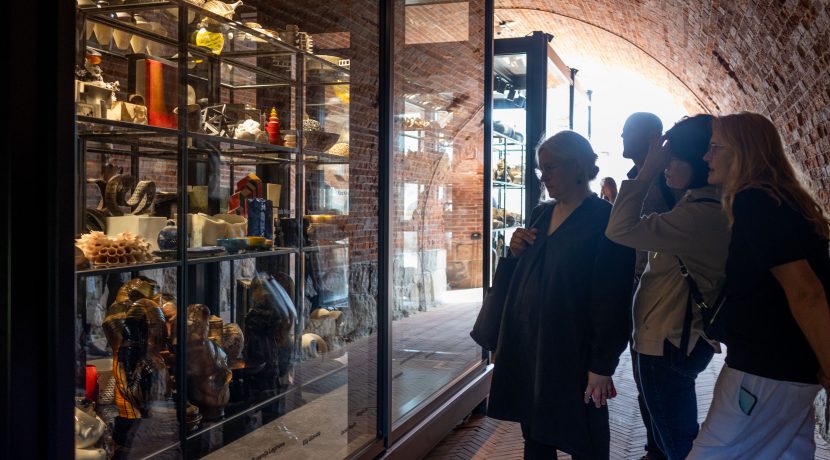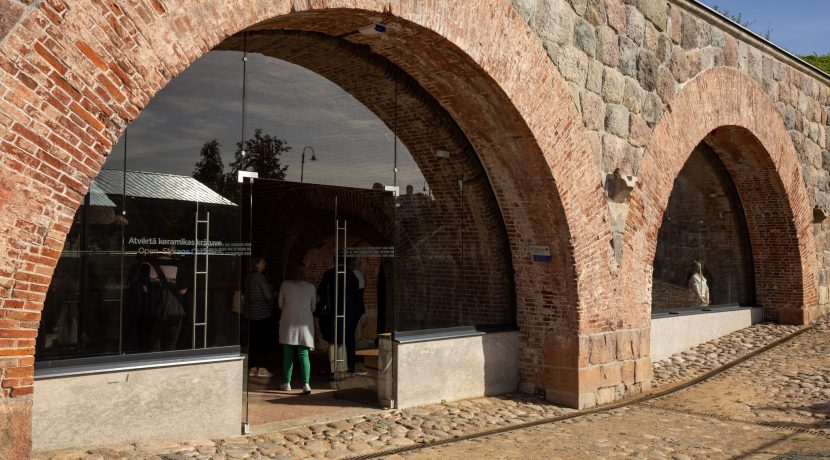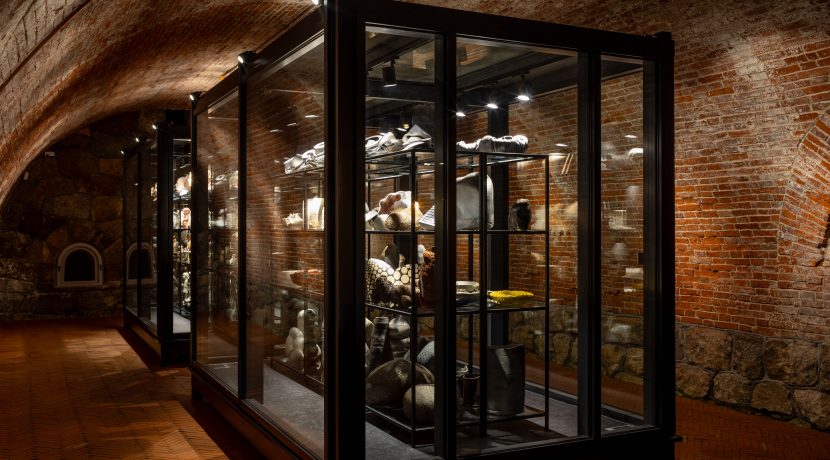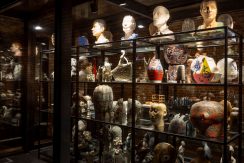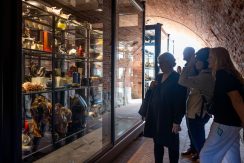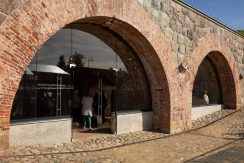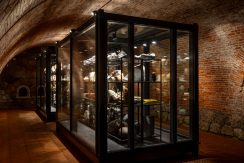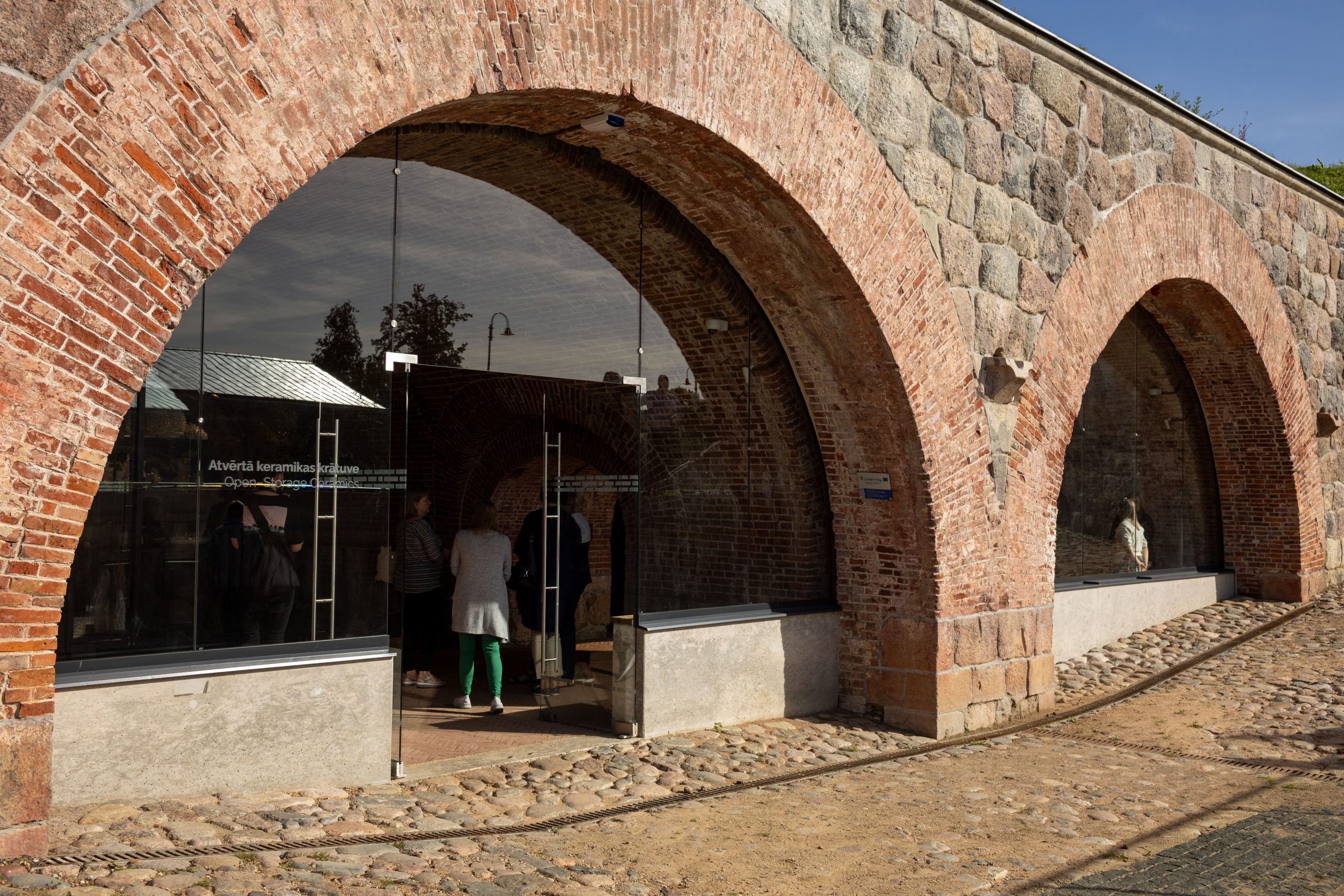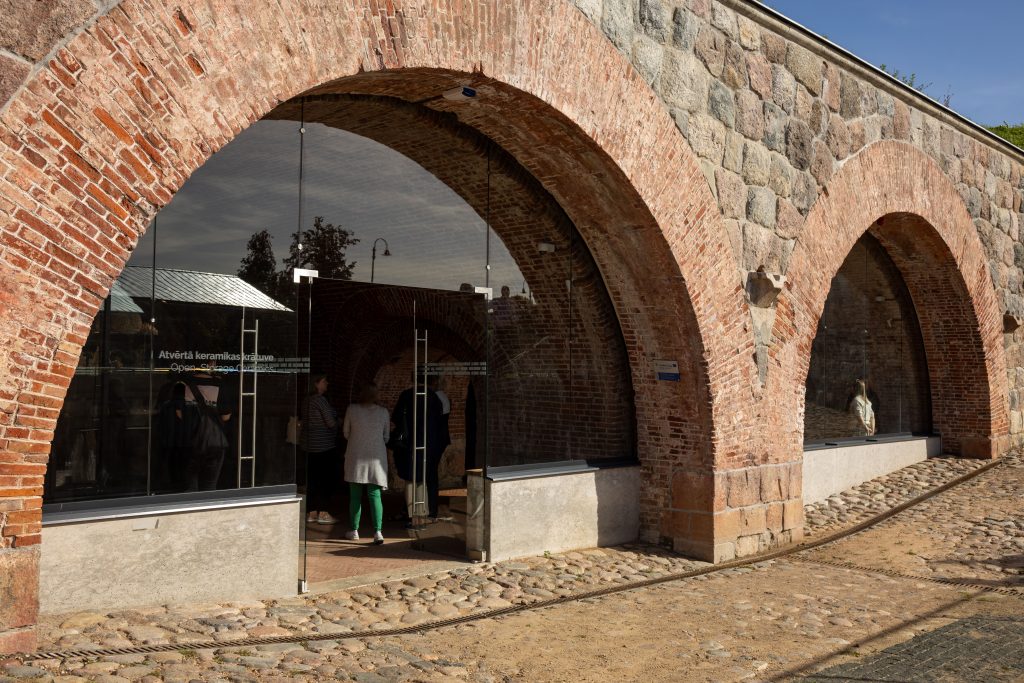The 7th bastion casemate of the Daugavpils Fortress is officially available in its new function – as an open-storage chamber for contemporary ceramics from the Rothko Museum collection.
Open storage is still underused in Latvian museum practice – so far, only a few heritage institutions enable the public to see their treasures beyond the normally closed repository setting. Open-storage facilities aim to give maximum access to museum collections that would otherwise stay behind closed repository doors and be mostly unavailable to the general public. The idea to bring the closely guarded museum collections out into the public eye originated in Canada in the 1970s and 80s. At the start, the new approach was called a radical shift and embodied an early attempt to move beyond the habitual museum practice. Today, this is no longer a new and surprising development. After all, the new museum definition has expanded its functions, lifting into the foreground accessibility to an increasingly broader spectrum of social groups along with diversified communication through tangible and intangible heritage tools.
The Rothko Museum’s open-storage facility displays a significant part of a vast contemporary ceramics collection steadily and purposefully acquired for no less than a decade. Its origins date back to 2013 when the Daugavpils Mark Rothko Art Centre held its first International Ceramic Laboratory Symposium, which became an annual tradition. From then on, the collection has been expanding yearly with the latest symposium output. Other acquisition sources are the Latvia Ceramics Biennale with its Martinsons Award and an eponymous international juried exhibition instituted in 2016, as well as some other juried exhibitions and a few targeted purchases. Professional curators have been attracting domestically and internationally renowned ceramic artists and achieving their representation in the Rothko Museum collection. At this point, the museum’s Contemporary Ceramics Collection has grown to more than 500 artworks, which makes it Latvia’s largest and most valuable repository of contemporary ceramic art.
The new open-storage chamber displays over a hundred artworks by artists from 40 countries. The open-access solution enables the public to explore the diversity of ceramic art and appreciate the artists’ creativity and professionalism in dealing with different earthen materials (from clay and chamotte to stoneware and porcelain) and multiple firing techniques.
The open-storage chamber is available daily from 8:00 a.m. to 8:00 p.m. The entrance is free.
The 7th bastion of the Daugavpils Fortress was restored in an EU-funded project “Cross-Border Loyalty Programme for Culture and Tourism” under the European Neighbourhood Instrument.


